How Much Walking Do You Need to Shrink Belly Pooch After 50?
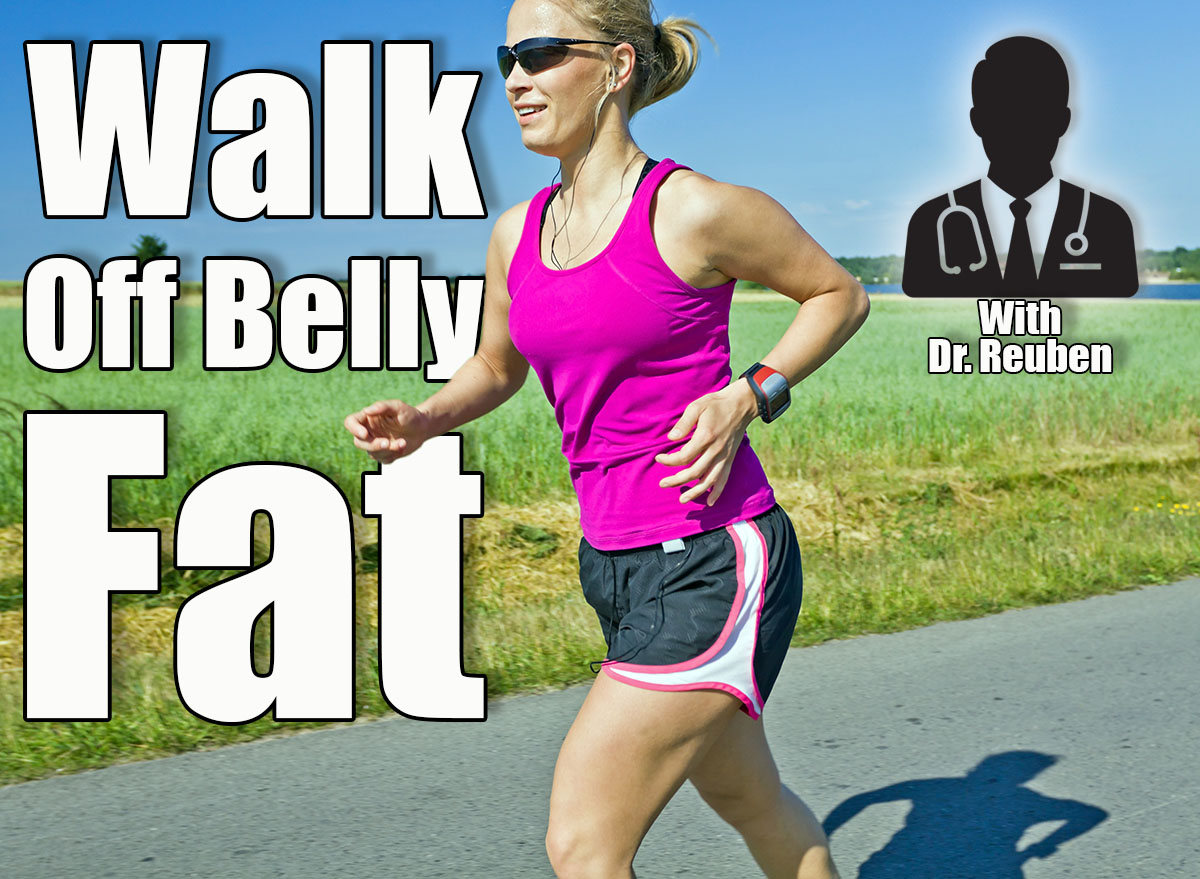
If you’re looking to burn unwanted belly fat, adding more steps to your day is an excellent way to do so. But just how much walking do you need to do to shrink a stubborn belly pooch? We spoke with an expert to learn the details. So lace up your sneakers and get ready to maximize your daily walking game for fat loss.
Burning Belly Fat Can Be Especially Pesky as You Age
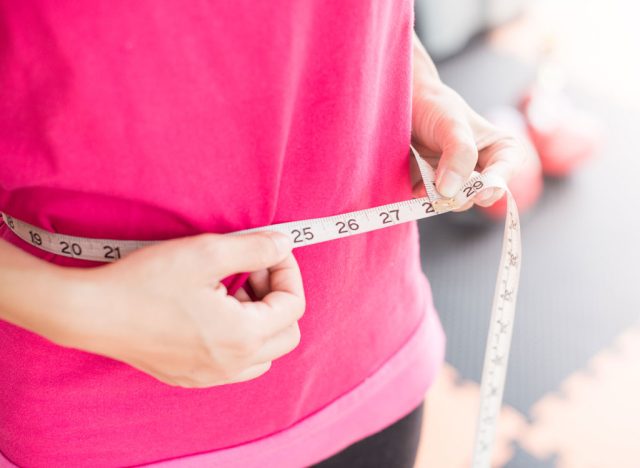
Belly fat can be quite persistent as you age, due to hormonal shifts and the natural loss of lean muscle, a process known as sarcopenia.
“After 50, hormonal changes like declining estrogen in women and testosterone in men slow metabolism and promote fat storage, particularly visceral fat around the abdomen,” explains Reuben Chen, MD, board-certified—sports medicine, TCM and pain management, chief medical advisor at Sunrider International. “A natural decrease in muscle mass reduces calorie-burning capacity, making it easier to gain fat. Additionally, lifestyle factors such as reduced physical activity and poor diet can exacerbate fat accumulation, while stress and poor sleep increase cortisol, further increasing belly fat retention.”
By optimizing your workout regimen, you can kick belly fat to the curb.
How Much Walking Do You Need To Lose Belly Fat After 50?
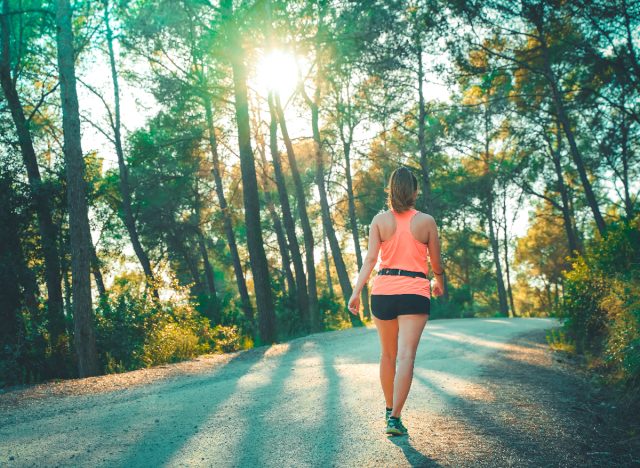
After 50, shrinking excess fat around your waist calls for consistency with the intensity and duration of your walks. Moderate to brisk walking raises your heart rate into the fat-burning zone, which torches more calories every minute compared to a casual stroll.
“However, total steps or duration also contribute significantly to better results, as longer sessions increase overall calorie loss,” Chen adds. “A balance of moderate intensity (where you can talk but not sing) and sufficient duration (30 to 60 minutes daily) optimizes fat loss.”
According to Chen, you should aim for approximately 30 to 60 minutes of moderate walking every day in order to see noticeable progress.
Yes, Your Daily Walks Really Are Melting Away Belly Fat
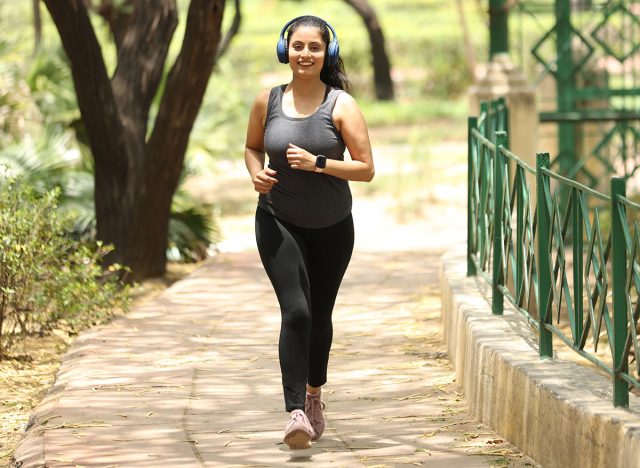
“Combining this with a balanced, calorie-controlled diet is needed since walking alone burns approximately 200 to 300 calories per hour, depending on pace and body weight,” Chen says. “Consistency over months is key to help with fat loss. Regular aerobic exercise like brisk walking can reduce overall body fat, including the belly, which can accumulate as you age.”
You heard that right—brisk walking can absolutely help decrease body fat. It also reduces stress hormones like cortisol, which contributes to belly fat, while helping support fat metabolism.
“[In addition, walking] enhances cardiovascular health and boosts metabolism—helping the body use stored fat for energy over time,” Chen notes. “Regular walking can also promote fat loss by burning approximately 100 to 300 calories per 30 to 60 minutes, depending on intensity.”
What Makes Walking a Safe and Effective Option for Adults 50+
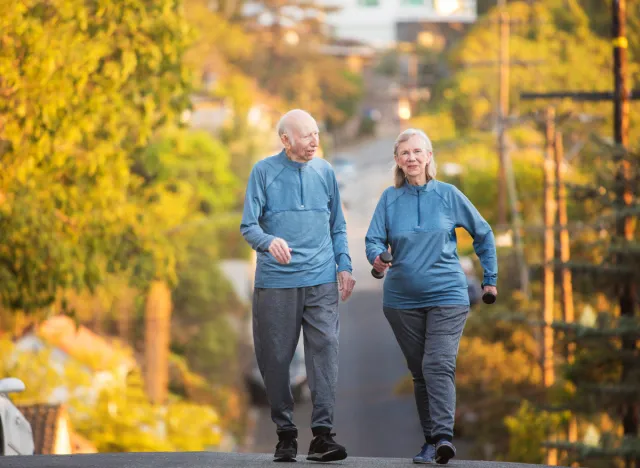
Beyond its belly fat-burning capabilities, walking is a safe and sustainable choice for those over 50. This low-impact form of cardio decreases undue stress on the muscles and joints, which is key for aging adults with decreased mobility and arthritis.
“In addition, it carries a lower risk of injury compared to high-intensity exercises like running or HIIT, which can strain the body,” Chen explains. “That strain can lead to higher stress, which can lead to increased cortisol levels in the body, contributing to fat storage. Walking also still provides cardiovascular and fat-burning benefits, making it sustainable and accessible for long-term fitness without requiring advanced fitness levels or equipment.”